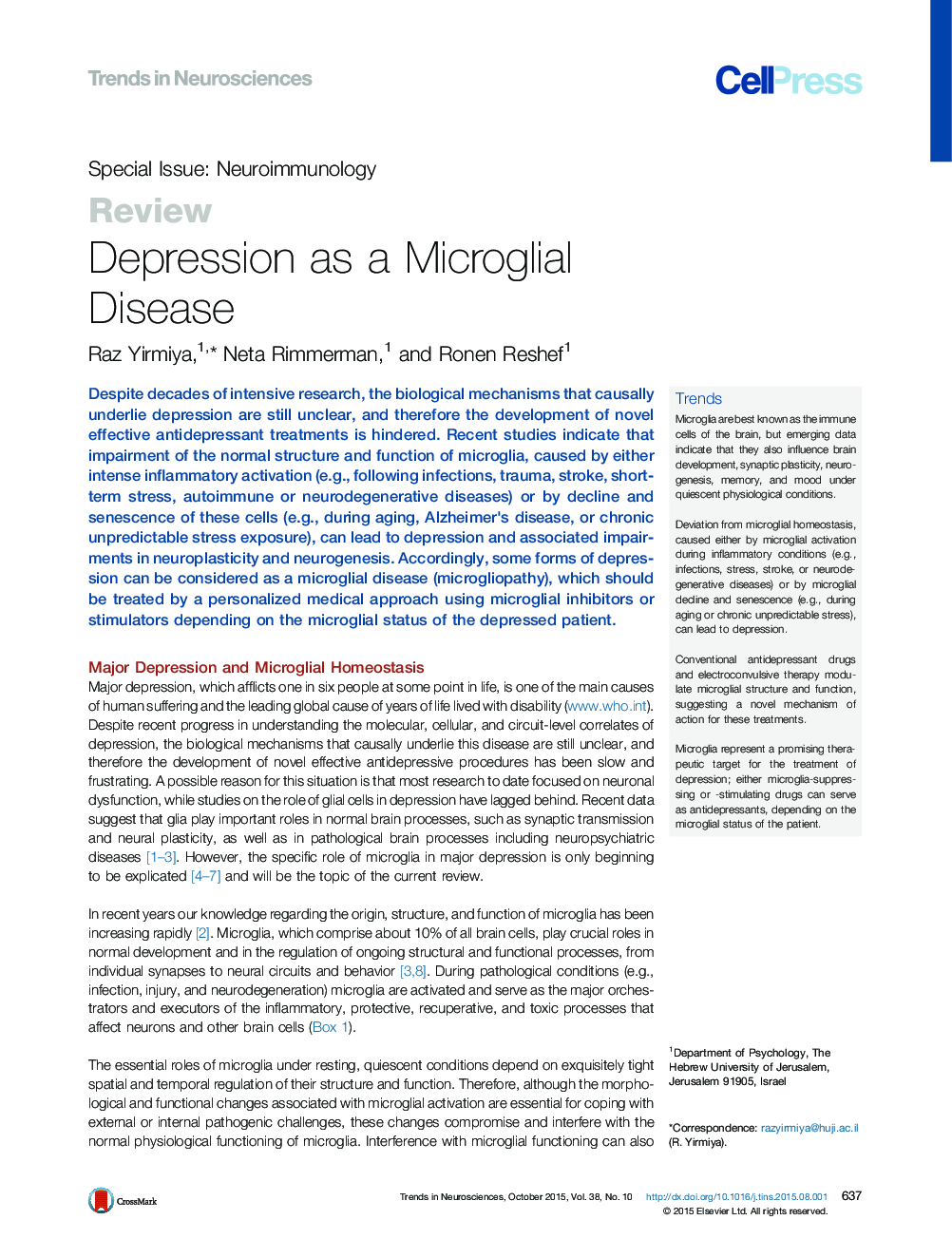| Article ID | Journal | Published Year | Pages | File Type |
|---|---|---|---|---|
| 4354110 | Trends in Neurosciences | 2015 | 22 Pages |
Despite decades of intensive research, the biological mechanisms that causally underlie depression are still unclear, and therefore the development of novel effective antidepressant treatments is hindered. Recent studies indicate that impairment of the normal structure and function of microglia, caused by either intense inflammatory activation (e.g., following infections, trauma, stroke, short-term stress, autoimmune or neurodegenerative diseases) or by decline and senescence of these cells (e.g., during aging, Alzheimer's disease, or chronic unpredictable stress exposure), can lead to depression and associated impairments in neuroplasticity and neurogenesis. Accordingly, some forms of depression can be considered as a microglial disease (microgliopathy), which should be treated by a personalized medical approach using microglial inhibitors or stimulators depending on the microglial status of the depressed patient.
TrendsMicroglia are best known as the immune cells of the brain, but emerging data indicate that they also influence brain development, synaptic plasticity, neurogenesis, memory, and mood under quiescent physiological conditions.Deviation from microglial homeostasis, caused either by microglial activation during inflammatory conditions (e.g., infections, stress, stroke, or neurodegenerative diseases) or by microglial decline and senescence (e.g., during aging or chronic unpredictable stress), can lead to depression.Conventional antidepressant drugs and electroconvulsive therapy modulate microglial structure and function, suggesting a novel mechanism of action for these treatments.Microglia represent a promising therapeutic target for the treatment of depression; either microglia-suppressing or -stimulating drugs can serve as antidepressants, depending on the microglial status of the patient.
